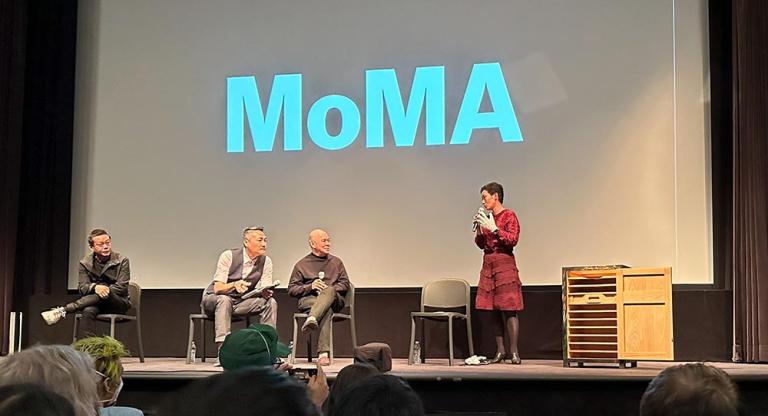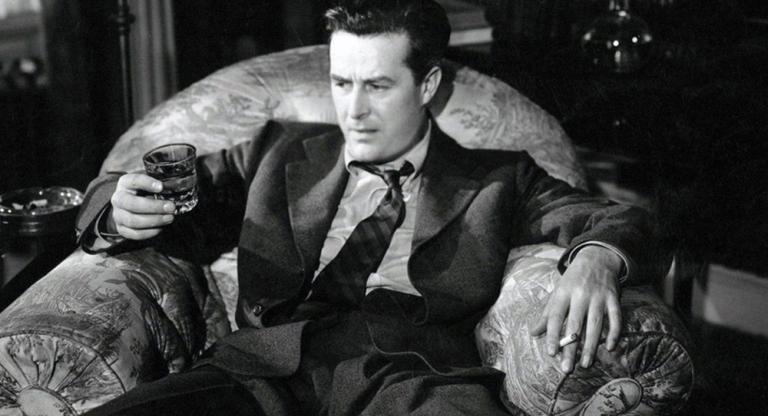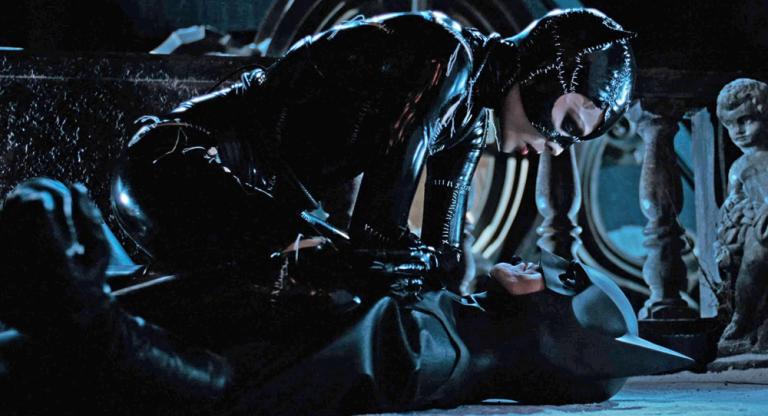A mix of performance art and documentary, Tsai Ming Liang’s Walker series features 10 short films to date, all of which center around a nameless, nonverbal figure modelled after the 7th century monk Xuanzang. The saffron-robed monk is played by Lee Kang-sheng and he silently trudges through liminal spaces and crowded urban centers in the modern day. A bustling intersection in Hong Kong, a nondescript wall somewhere in Taiwan, and by the Washington Monument, the bald Buddhist traverses westward. The sixth installment in the Walker series is Journey to the West (2014), where viewers find the protagonist in Marseille, wandering the port city, observed by curious bystanders, and followed by a nameless mimic (Denis Lavant).
The film shares its title with a Chinese literary classic, where over the course of 100 chapters the monk Tang Sanzang embarks on a pilgrimage to India with his three disciples: a voracious humanoid pig, a cursed desert-dwelling brute, and the infamous Monkey King. One way of viewing Tsai’s film is as a minimalist take on these extravagant mythologies—a decades-long expedition condensed into an afternoon walk by the Mediterranean. Just like Tang, this rendition of Xuanzang is a foreigner in transit, beset by suspicious stares and trailed by a mysterious, otherworldly acolyte. Tsai opens his film on an approximately eight-minute shot of Lavant’s face in which the camera examines the rugged architecture of his features. As his heavy breaths and the ambient flow of the ocean lull us into a meditative state, it is hard not to focus on his large pupils. Two pitch black openings into a total abyss, signaling an interior that’s either totally empty or filled with despair. Perhaps like the disciples, he too is a lost soul and in need of guidance.
Tsai’s title may urge viewers to survey for possible connections on screen, but what might be more revealing is what is absent. The Journey to the West mythology has been adapted and re-adapted for the screen countless times. Depictions range from a 1927 silent film all the way to a 1999 Chinese-Quebecois jointly-produced animated TV show, as well as more recent blockbuster remakes starring the likes of Stephen Chow. All these remakes took full advantage of the formal innovations of their times. Elaborate costumes, as well as grotesque makeup jobs and CGI constructs were employed to bring the fantastical imagery in the book’s pages alive. Tsai and Lee opt for an opposite approach. During Journey to the West, Lee’s Xuanzang momentarily attracts the attention of the locals. Adults fixate on the monk as they pass him by on a derelict staircase. Children stop and stare. Sunlight seeps in from above, appearing to wrap the robed figure in a divine light. But just like the troves of tourists that fly in-and-out of France’s oldest city every week, in wide, the monk easily blends into the subdued, yellowish-taupe tones of Marseille. Reflected atop tiled panels of glass is a distorted image of Lee and Lavant, navigating a seaside promenade with a weighted spectral tread. In the sultry heat of the Riviera summer, it seems this journey has no destination. We merely observe two displaced travelers, either lost in time or ascended to some enlightened plane, as they slowly inch toward their next step.
Journey to the West screens tonight, April 27, and on April 29, at Metrograph as part of the series “Drifting Through Time: Focus on Lee Kang-sheng.” It will be accompanied by No No Sleep.




